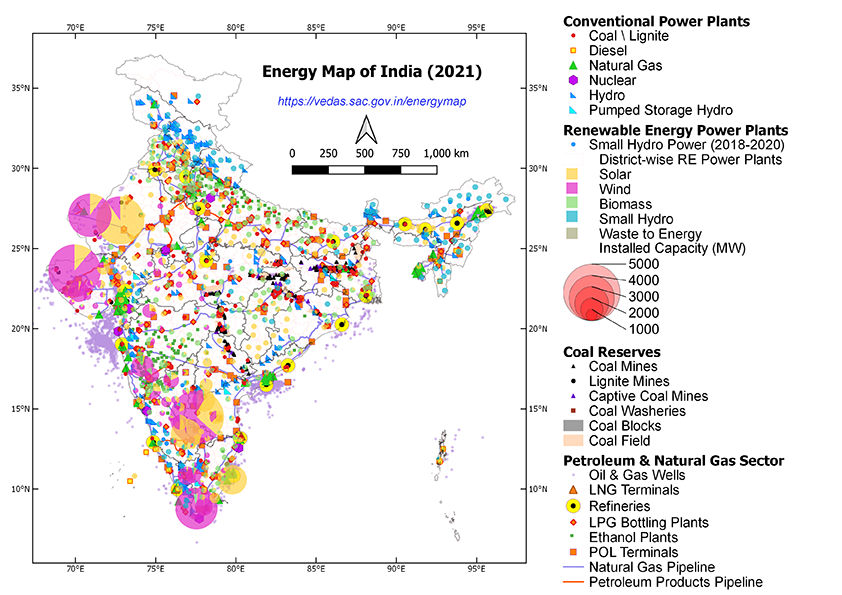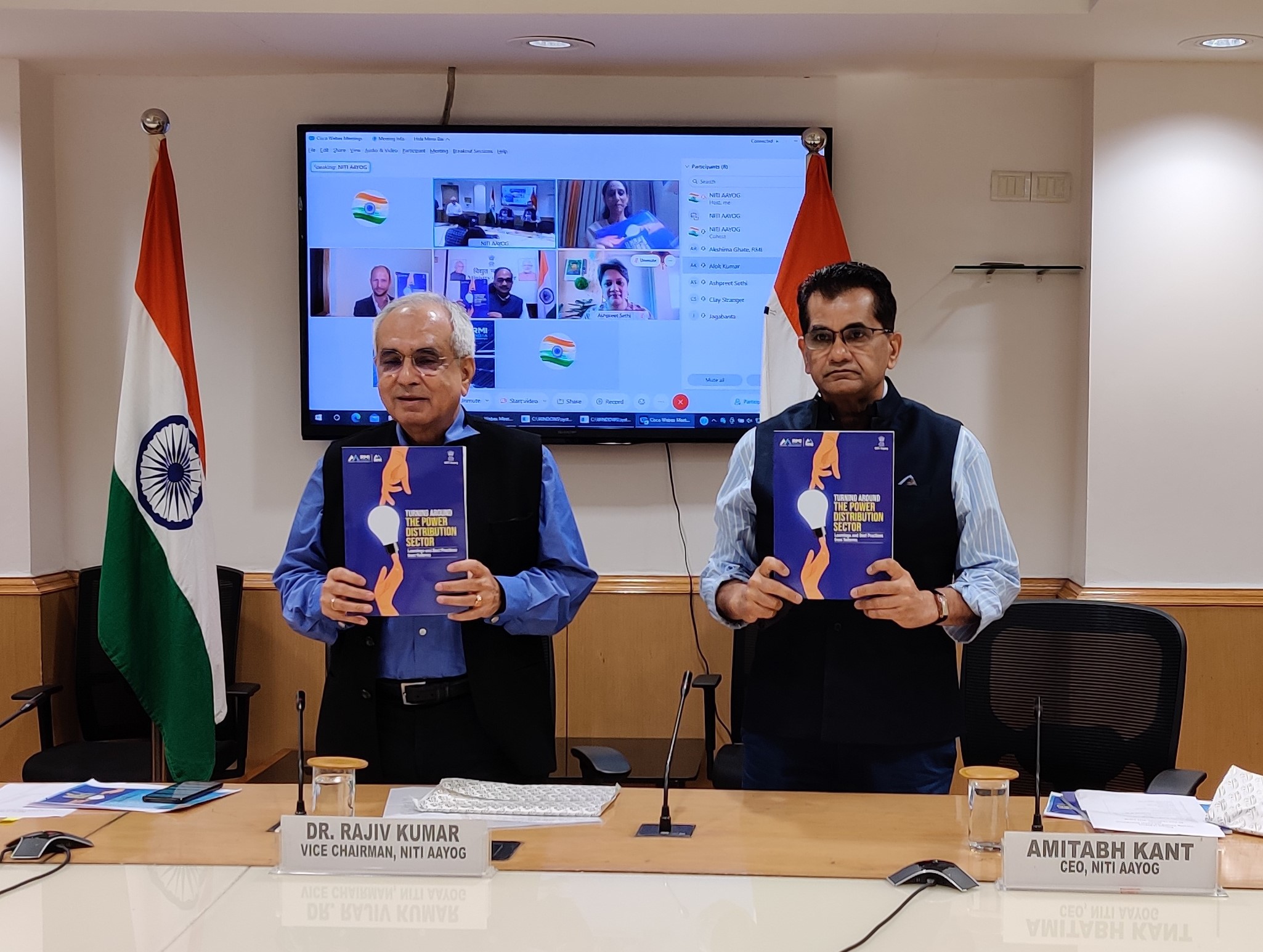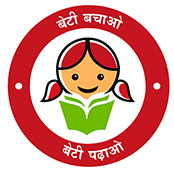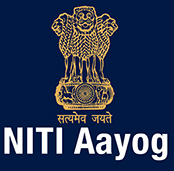- Overview
- The Vertical strives to provide top-quality policy support to all stakeholders to make India energy-secure. It aims to boost investment to achieve an efficient, sustainable, and clean energy system. The Vertical makes concerted efforts towards reducing energy import, ensuring an alternative supply of energy and enhancing domestic supply. It seeks to strengthen the energy infrastructure and resolve cross-sectoral issues. The policy framework is geared such that energy is supplied through efficient markets to improve India’s competitiveness and spur economic growth.
- Core Functions
-
The Energy Vertical deals with five key sectors: power, coal, petroleum and natural gas, new and renewable energy, and atomic power.
Policy Analysis
The Vertical examines:- Project proposals of SFC/EFC/PIB/PPRs for investment decisions
- DPRs related to oil and gas, power, new and renewable energy, coal, climate-related issues pertaining to energy, and furnishing comments on technical and financial feasibility
- Proposals in the form of Cabinet Notes/sector for CCEA, Committee on Establishment Expenditure (CEE)/Cabinet Committee on Security, of Ministries for comments and approval
- Joint ventures/subsidiary proposal of Ministries
- The Vertical provides inputs for formulation of policies/regulations/strategies and vision for the energy sector;
- It utilises analytical tools/energy modelling in generating long-term scenarios for the supply and demand sides of the energy sector.
Examining energy-sector projects of Ministries and furnishing comments to the Department of Economic Affairs, Ministry of Finance, for loan and grant tie-up with multilateral financial institutions (for example, World Bank, ADB, BRICS New Bank etc.).
Infrastructure Review by Prime Minister- To coordinate and provide support in organising review meetings on outcome-based energy infrastructure projects, chaired by the Hon’ble Prime Minister of India;
- To provide support in preparing output-outcome based budget for the Ministries of Power, Coal, New and Renewable Energy, Petroleum and Natural Gas.
Robust energy data is essential to formulate and analyze policies for promoting energy access, security and sustainable development. A review report of India’s Energy Data Management revealed that there is a lack of coordination among the energy ministries/departments in the five sectors. A study on the Assessment of Energy Data Management revealed that the collection and analysis of demand sectors' data are weak. To strengthen the energy sector data, the Vertical has taken up the following five activities: 1. Development of India Energy Dashboards 2. Setting up of India Energy Modelling Forum 3. Development of India Energy Security Scenario 2047 4. Development of MESSAGEix Model 5. Development of Geospatial Energy Map of India
Energy Data Management - Partners
-
Organisation
Collaboration/Support
Link
Indian Space Research Organisation (ISRO)
Development of GIS Map
The Energy and Resources Institute (TERI), New Delhi
Modelling, Policy Paper, Data Management
Council on Energy, Environment and Water
Policy Paper, Research Study
Centre for Study of Science Technology and Policy (CSTEP), Bengaluru
Modelling, Policy Paper, Data Management
Prayas (Energy Group), Pune
India Energy Dashboards, India Energy Modelling Forum
Alliance for an Energy Efficient Economy (AEEE), New Delhi
Research and policy development in the area of the Energy Efficie
IIT Bombay
India Energy Security Scenario 2047 Version 3.0
IIT Delhi
India Energy Modelling Forum
IIT Kanpur
Knowledge partner for MESSAGEix
IIT (ISM) Dhanbad
Study on the future coal scenario in India till 2050
University of Petroleum and Energy Studies, Dehradun
Research, Modelling and paper writing on Energy Sector policies
Smart Power India
Research and pilot project in the area of Mini and Micro Grid.
Energy Policy Institute at the University of Chicago, India (EPIC, India)
Research and Policy analysis for air quality, quality, reliability and access of electricity
US Energy Information Administration (EIA)
Sustainable Growth Pillar, Energy Data Management
United State Agency for International Development (USAID)
US India Sustainable Growth Pillar
United Kingdom Department of Business, Energy and Industrial Strategy (UKDBEIS)
Technical support for India Energy Security Scenario 2047 Version 3.0
https://www.gov.uk/government/organisations/department-for-business-energy-and-industrial-strategy
International Energy Agency (IEA)
Research and Policy analysis of the energy sector, energy data management training, workshop on the Power Sector Transformation, Energy Policy Dialogue
Lawrence Berkley National Laboratory (LBNL)
US India Sustainable Growth Pillar
Institute of Energy Economic, Japan (IEEJ)
Research and Policy analysis and modelling activities
The Rockefeller Foundation, USA
Work related to Electricity Access and Benchmarking of the DISCOMs
World Resources Institute
Research and Policy Analysis of the energy sector
India Smart Grid Forum
Work related to smart grid, battery storage, hydrogen, electric cooking, regional grid and RE integration
FICCI
Organising Stakeholder consultations on energy sector policies
CII
Organising Stakeholder consultations on energy sector policies
Embassy of Netherlands
Research and Policy paper preparation on climate change, battery storage, modelling projects
The World Bank
Technical Assistance for Battery Storage Demand Assessment
Rocky Mountain Institute
Light house of Discoms, Battery Energy Storage programs
Vasudha Foundation
SoI for Maintaining and Developing India Energy Dashboards (IED-3.0) h
- Line Ministries
-
- Ministry of Power
- Ministry of New and Renewable Energy
- Ministry of Coal
- Ministry of Petroleum and Natural Gas
- Department of Atomic Energy
- Reports
-
Title Download Analysis of Historical Ambient Air Quality Data along with Emission from coal-based Thermal Power Plants for Developing a Decision Support System 
Report on Enhancing Domestic Coking Coal Availability to Reduce the Import of Coking Coal 
Domestic Manufacturing Capacity & Potential Cyber Security Challenges in the wind sector and Way Forward 
Developing Chemistry agnostic standards for energy storage technologies 
LNG as a Transportation Fuel in Medium & Heavy Commercial Vehicle Segment 
Report of the Inter-Ministerial Committee on Energy Data Management 
Report of the Inter-Ministerial Committee on just Transition from Coal 
Report Committee on Low Carbon Technologies 
Report on Carbon Capture, Utilisation, and Storage (CCUS) Policy Framework and its Deployment Mechanism in India 
Harnessing Green Hydrogen Opportunities For Deep Decarbonisation In India 
State Energy & Climate Index - Round l 
Energy Data Subgroup Report- Electricity 
Turning Around The Power Distribution Sector: Learning and Best Practices from Reforms 
NITI Aayog, Rockefeller Foundation & Smart Power India along with Ministry of Power Launched Electricity Access & Utility Benchmarking Report 
RMI and NITI Aayog Discom Transformation Platfrorm Post Workshop Report 
India Green Stimulus Report 
Electricity Access & Utility Benchmarking 
NITI Aayog & World Bank : Energy-Water-Agriculture Nexus 
IEA India 2020 - Indepth Energy Policy Review 
CEEW - Roadmap for Access to Clean Cooking Energy in India Report 
Workshop Report and Summary of Next Steps: First India Energy Modeling Forum Workshop Venue: NITI Aayog 
Workshop Report 2018 The Indian Power Sector Low Carbon Strategy for Renewable Energy Integration 
NITI IEA Workshop on Energy Statistics and Building an Energy Balance in India 
Deliberations of the Task Force on Roadmap for India on Solar & Wind Energy beyond 13th Plan 
Report Of Sub-Group On Agriculture Sector For Energy Data Management 
Report on India's Renewable Electricity Roadmap 2030 
Geospatial Energy Map of India - Brochure
- Video of Vice Chairman, NITI Aayog
- Video of Member, NITI Aayog
- Video of CEO, NITI Aayog
- Video of Director, SAC-ISRO

View
View
View
ViewTurning Around the Power Distribution Sector by NITI and RMI 
RE-Integration report, jointly launched by NITI and IEA 
Roadmap for Ethanol blending in India 2020–25 
India Energy Dashboards Version 2.0 - Brochure
- Video of Vice Chairman, NITI Aayog
- Video of Member, NITI Aayog
- Video of CEO, NITI Aayog

View
View
ViewReport of Comprehensive Economic and Environment Impact of Coal Washing in India by TERI 
Electricity Access in India and Benchmarking Distribution Utilities 
IEA India 2020: In-Depth Energy Policy Review 
NITI Aayog and World Bank: Energy-Water-Agriculture Nexus 
Energy Data Subgroup Report: Agriculture 
Energy Data Subgroup Report: Buildings 
Energy Data Subgroup Report: Coal 
Energy Data Subgroup Report: Electricity 
Energy Data Subgroup Report: Industry 
Energy Data Subgroup Report: Oil and Gas 
Energy Data Subgroup Report: Renewable Energy 
Energy Data Subgroup Report: Transport 
NITI Aayog and GIZ: National Sensitisation Workshop on State Energy Action Plan 
Report of the Energy Storage System (ESS) Roadmap for India: 2019–32 
Roadmap to Fast Track Adoption and Implementation of Energy Conservation Building Code (ECBC) at the Urban and Local levels 
State Renewable Energy Capacity Addition Roadmap 
India’s Leapfrog to Methanol Economy 
Energising India 
Report of the Workshop on Energy Modelling and Launch of Energy Data Portal (dashboard) on 12 May 2017 at NITI Aayog 
Report on India’s Renewable Electricity Roadmap 2030 
A Report on Energy Efficiency and Energy Mix in the Indian Energy System (2030) Using India Energy Security Scenarios, 2047 
Energy Efficiency Interventions at NITI Aayog 
Report of Expert Group on 175 GW RE By 2022 
- Current and Upcoming Projects
-
The updated India Energy Security Scenarios (IESS 2047) is an open-source tool developed by NITI Aayog. This tool analyzes the demand and supply of energy in India, considering factors like emissions, cost, land, and water requirements up to 2047.
India Energy Security Scenario 2047 (IESS 2047) Version 3.0
Designed for public use, IESS 2047 allows users to generate their energy pathways. It is an interactive tool that helps develop diverse energy transition scenarios to achieve net zero. It enables the calculation of the country's energy needs and estimates, thus reducing reliance on external agencies.
Link to the site: https://iess2047.gov.in/
NITI Aayog has launched the third iteration of the India Climate & Energy Dashboard (ICED 3.0). This platform serves as a single access resource for near real-time data related to the energy sector, climate, and associated economic datasets, all sourced from government publications.
India Climate and Energy Dashboard
ICED offers invaluable insights into the energy and climate sectors, helping stakeholders identify key challenges. The portal synthesizes data to monitor India's progress towards clean energy transition. With over 500 parameters, 2000 infographics, and interactive visualizations, ICED provides a detailed view of India's energy sector.
Link to the site: https://iced.niti.gov.in/
Energy Sector Reforms
- A High-Level Committee on Coal Sector was constituted by the Government of India, under the chairmanship of Vice Chairman, NITI Aayog, to provide recommendations for enhancing domestic exploration, production, reduction of imports and for achieving rapid growth in export. Based on the Committee’s recommendations, the Ministry of Coal has notified commercial coal mining. This was launched in June 2020, wherein 41 blocks were offered, of which 19 blocks have been allotted so far.
- A High-Level Committee on Enhancement of Domestic Oil and Gas Exploration and Production, under the chairmanship of Vice Chairman, NITI Aayog, finalised its recommendations. Based on the recommendations, the policy was approved by the Cabinet and notified. It is under implementation and we may expect results in the next 5–10 years.
- Transition Towards Green Hydrogen Strategy: Green Hydrogen has proven to be a game-changer in the renewable energy space. India should aim at replacing all grey hydrogen with green. India has the potential to become the world leader in green hydrogen and associated technologies like electrolyzers. The green hydrogen strategy document has undergone several rounds of consultations with different stakeholders, who are encouraging many industries to consider opting green hydrogen. NITI Aayog is supporting the initiatives on the National Hydrogen Energy Mission for promoting green hydrogen.
- Future Coal Scenario: Various reforms initiatives have been undertaken by the government in the coal sector, including commercial coal mining with no end-use restrictions. At the same time, there is a global move towards clean energy transition. NITI Aayog has initiated a study on the future coal scenario. The report is currently being prepared based on the literature review of eight studies employing bottom-up and top-down approaches to estimate coal requirements.
Vision Document 2035
NITI Aayog kickstarted the exercise for drafting Vision Document 2035 for India, with the base year of 2020. The vision intends to provide a broad roadmap for addressing the concerns of energy access, affordability, reliability rational pricing and energy security. The document is under finalisation after due consultations with the relevant stakeholders and the Ministries/Departments.
NITI Aayog is working on a State Energy and Climate Index to assess the performance of States based on a number of indicators. These include discoms’ viability and competition, access, affordability and reliability of energy, clean energy initiatives and energy efficiency. The work is in progress and the tool will be designed to assess States’ performance on various energy parameters, which will help them to efficiently manage their energy resources and provide better access to citizens.
State Energy and Climate Index
NITI Aayog has partnered with UK Department of Business, Energy and Industrial Strategy for technical support to update India’s national calculator IESS 2047. IIT Bombay has been selected as the lead downstream partner from India for leading the project. A consortium has been formed with stakeholders from 18 institutes/organisations (industry, academia, government and think tanks/policy research organisations) who would be involved in updating the calculator.
India Energy Security Scenario 2047 (Version 3.0)MESSAGEix
NITI Aayog, with support from IIASA and IIT Kanpur, is developing the MESSAGEix model as an energy optimisation tool.Geospatial Energy Map of India
NITI Aayog collaborated with Indian Space Research Organisation (ISRO) to develop a comprehensive Geospatial Energy Map of India, which provides a holistic picture of India’s energy sector. This includes the visualisation of spatial and non-spatial data on renewable and non-renewable power plants, oil and gas downstream sector, renewable energy potential, fossil fuel resources, and other energy assets. The Geospatial Energy Map of India will be launched soon. The maps can be accessed here.
India Energy Dashboards
In order to create a one-stop destination for the energy data of the country, NITI Aayog has developed India Energy Dashboards (IED) with the support of the Ministries of Coal, Power, Renewable Energy, and Petroleum and Natural Gas. The IED was launched in April 2021. It can be accessed here. The Vertical is in the process of integrating the demand side data into the India Energy Dashboards based on the reports by the sub-groups. The efforts will also be there to bridge the supply side data gaps.International Energy Agency (IEA)
NITI Aayog, in collaboration with IEA, has taken up the following activities:
- Power System Transformation Workshop 2020–21: NITI Aayog and IEA organised workshops on ‘Power System Transformation’ in Maharashtra, Gujarat and Karnataka. The objective of these workshops was to bring together the international, national, and state-level stakeholders to address the issues of increasing shares of solar and wind in the grid. The workshops also explored opportunities for flexibility solutions to overcome issues faced by the States with regard to forecasting of solar and wind, transmission challenges, technical challenges, such as inertia, system strength, frequency and voltage issues, demand forecast, etc.
- Launch of Renewables Integration in India 2021: The analysis in this report is based on the outcomes of national and regional workshops focused on India’s low-carbon transition strategy for renewable energy integration held in 2018 and a series of power system transformation workshops in Maharashtra, Gujarat and Karnataka in 2020 and 2021. The report not only includes outcomes of the workshops but also presents analysis to address future grid integration challenges due to a high penetration of renewables in India by 2030. The report provides an international framework for renewables integration and highlights a full repertoire of power system flexibility solutions. Power system transformation pathways and renewables integration challenges, solutions and priorities are vastly different in States and Union Territories.
- Capacity building exercise: IEA and NITI Aayog has jointly worked with the States for capacity building and training program better energy data management.
Under the India–Saudi Arab strategic partnership, NITI Aayog has been engaged with SCISP to identify priority areas for strategic investment. Ministries and departments have identified priority areas for discussion.
Saudi Centre for International Strategic Partnership (SCISP)
NITI Aayog has collaborated with Rocky Mountain Institute (RMI) to create the Lighthouse DISCOM programme, which is aimed at identifying reforms that can improve the operational and financial performance of Discoms. A report that draws learnings and best practices from domestic as well as global experience has been published.
Lighthouse DISCOM Programme
NITI Aayog, in consultation with the Ministry of Petroleum and Natural Gas, organises an annual interaction of the Hon’ble Prime Minister of India with the CEOs of global oil and gas companies. An annual event since 2016, the objective of the interaction is to create a global platform to understand best practices, discuss reforms, and plan strategies for accelerating investments into the Indian oil and gas value chain. This helps in key policy reforms in oil and gas sectors.
Prime Minister’s Interaction with CEOs of Global Oil and Gas Companies
A Coal Gasification Committee has been set up under the chairmanship of Dr VK Saraswat, Member, NITI Aayog, to prioritise coal gasification projects in consultation with the Ministry of Coal. A technical standing group has also been created under his chairmanship. The Committee provides policy direction and recommendation for appropriate coal gasification technology suitable for Indian coal gasification projects.
Coal to Chemical
NITI Aayog has been provided USD 1 million as technical assistance (TA) to carry out a study (i) on preparing grid-level policy and regulations framework for energy storage demand (ii) demand study at ISTS (interstate transmission system) level and (iii) demand study at the distribution level (in the state) for energy storage requirement of all kinds. The report is in the final stage and would help for planning of energy storage at grid and distribution levels.
World Bank (USD 1 million) TA for Assessment of Battery Storage
Under the US–India Strategic Energy Partnership (SEP), NITI Aayog and USAID lead the sustainable growth pillar. Under this, activities such as low carbon technologies, energy data management, transition and decarbonisation of heavy industries are being pursued.
India-USA Strategic Clean Energy Partnership (SCEP)
India Climate and Energy Modelling Forum (ICEMF) is a platform for leading energy experts, think tanks, researchers, modellers and policy makers to collaborate and examine important climate, energy and environment related issues, including their economic linkages, through integrated modelling exercises. ICEMF was originally institutionalized as IEMF (India Energy Modelling Forum) on 2nd July 2020, under the aegis of the Sustainable Growth Pillar (SG Pillar) of India-US Strategic Clean Energy Partnership (SCEP). To meet the “Panchamrit” commitments made by Hon’ble Prime Minister of India during COP26 at Glasgow, the scope of IEMF was expanded to include climate and economic modelling leading to a revitalised ICEMF.
India Climate and Energy Modelling Forum (ICEMF)
NITI Aayog, in consultation with the Ministries of Mines, Coal, Steel and Finance, finalised the framework for appointment of MDO. The framework has been submitted to the Cabinet Secretariat. Based on the recommendations, 51 mines have been put on development through MDO route.
Mine Developer and Operators (MDOs) -
-
Who's Who
-
Name
Designation
EMAIL ID
Sh. Rajnath Ram Programme Director rajnath-pc[at]nic[dot]in Sh. Harendra Kumar Joint Adviser kumar[dot]harendra[at]nic[dot]in Sh. Venu Gopal Mothkoor Senior Specialist venu[dot]mothkoor[at]govcontractor[dot]in Sh. Prashanth Vairavana Regy Consultant Grade II prasanth[dot]regy[at]govcontractor[dot]in Sh. Manoj Kumar Upadhyay Deputy Adviser mk[dot]upadhyay[at]nic[dot]in Sh. Jawahar Lal General Manager jawahar[dot]lal68[at]gov[dot]in Ms. Divya Midha Public Policy Specialist divya[dot]midha[at]govcontractor[dot]com Dr. Swapnil Murilidhar Morande Senior Associate swapnil[dot]morande[at]govcontractor[dot]in Ms. Kamil KPS Bhullar Assistant Director kamil[dot]bhullar[at]gov[dot]in Ms. Poonam Kapur Economic Officer poonam[dot]kapur[at]nic[dot]in
Energy
 National Portal Of India
National Portal Of India 


